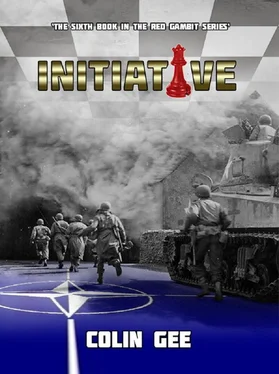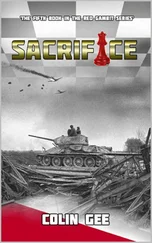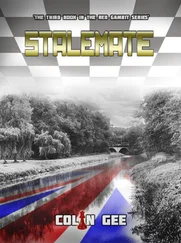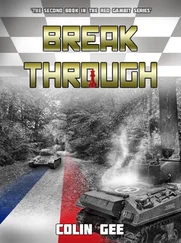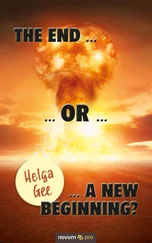As he spoke, occasionally pointing at the map, notes were taken, even by those who were not tasked for Mission 17, just in case a failure or a loss promoted them to participating in the greatest bombing raid in history.
Hazen drew their attention to the new fighter aircraft that had wounded and killed men from other units in the 313th Bombardment Wing the day beforehand.
“Intelligence suggests that they’re Nakajima 87’s, a specialised high-altitude interceptor. Seems like 679th Bombardment Squadron also had a run-in a couple of days beforehand.”
No one stated the obvious about the lack of intelligence communications on the matter.
“Anyway, they don’t seem to have many of them, but they’re bad news for sure. The powers-that-be’ve upgraded our fighter support, and three squadrons of long-range Mustangs, not one, will be staging out of our foothold on Taiwan to escort you all the way in and out.”
Nods gave the seal of approval to the upgrade in fighter protection.
Hazen finished up and ceded the floor to Colonel Tibbets.
“Final mission allocation, gentlemen.”
He pulled aside the black cloth, revealing the aircraft assigned to which task.
There were whoops and groans, depending on the job allocated, the deeper groans from those whose call sign was not on display and therefore had no role in Special mission 17.
Major JP Crail spoke to his boys through the hubbub of joy and disappointment.
“At least we get to fly, boys. And who knows, eh?”
There were three possible targets for the mission, a situation brought about by the unpredictable nature of Japanese weather. The alternates were listed, should there be obscuration issues over target number one.
Hiroshima.
The B-29 could bomb by radar, but the mission parameters required a visual drop.
Hiroshima and the two alternates, Kokura and Nagasaki, each had a weather assessment aircraft assigned, the three B-29 crews happy to be involved, but restrained because they had no active role to play.
Dimples 85, 71, and 83 were assigned to Hiroshima, Nagasaki, and Kokura, each aircraft recorded by their nose name, as ‘Straight Flush’, ‘Jabit III’, and ‘Full House’ respectively.
Dimples 89, ‘The Great Artiste’, was slated for the bombing group, its blast measuring gear there to record what happened when the mission hit the target.
‘Necessary Evil’, call sign Dimples 91, was also in the bomb group, included as official observation and photography unit.
Tibbets would take ‘Enola Gay’, Dimples 82, and carry the Atomic bomb, serial number L-11, as primary strike aircraft on the mission.
Which left Crail and his crew, in Dimples 98, who would be armed with L-9, a fully operational device that they would take into the air and bring back home, unless Tibbets and Enola Gay fell by the wayside.
Crail smiled across at Eddie Costello of ‘Laggin Dragon’, who was not rostered to play any part.
The hurt in his friend’s eyes gave him a moment’s pause.
In the background, he heard the ‘dismiss’, which was underlined by the scrape of chairs as men rose up.
He nodded sympathetically to Costello and brought his attention back to his disappointed crew.
“Could be worse, guys,” he inclined his head towards the silent crew of the ‘Dragon’.
“Now, let’s grab some chow.”

Crail’s crew were a quality team, brought together by their excellence at their individual crafts, and welded into a tight and efficient group by training, and training, and yet more training.
They were mainly good friends, although there were frictions, as there always will be.
They were officers and NCOs, college boys and farmer’s sons, whose only common ground was servicing the Silverbird B-29 and the country whose uniform they wore.
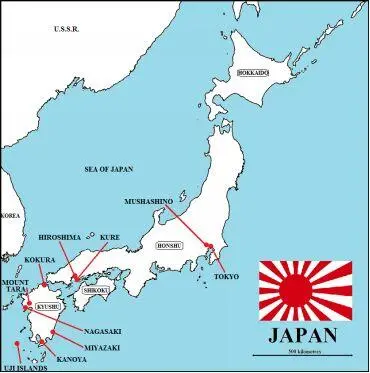
Fig # 180 – The Japanese Home Islands.
0301 hrs, Wednesday, 29th May 1946, North Field, Tinian, Marianas Island Group.
‘Miss Merlene’ rose into the dark sky with as much grace as its overweight frame would permit, throttles pressed hard against the stops to extract maximum power.
In the blackness below, the sight of headlights and torches flitting around the shape of a B-29 stood out, the more so because of the importance of what had happened precisely six minutes beforehand.
Special mission 17, now known as Centerboard One, had not started well.
‘Enola Gay’ was fourth off, and had been taxiing to the runway when her outside port engine did what the Wright R-3350s did now and again.
Normally such failures were based around an issue with the valves, the ground crew called it ‘eating them’, where the valves were somehow drawn into the engine.
The alloy crankcase meant that any combustion was abetted by the magnesium, making such failures frequently fatal to the engine and mission, and if airborne, highly dangerous for the crews.
The fire had been brought under control speedily, as the strip had twice the normal allocation of emergency response considered standard for a ‘Very Heavy’ bomb group.
But Tibbets and his aircraft were spent, which meant that the burden of the attack now fell upon ‘Miss Merlene’ and her crew instead.
The training cut in, so Crail moved up to the take-off position and waited whilst the Weaponeer and his assistant were speedily transferred from the lame duck to his craft.
No sooner were the two Navy men aboard than permission to take-off was in hand, and ‘Miss Merlene’ rolled down the North runway to a date with history.

The sun rose over Japan at 0428 hrs precisely, bathing cockpits and crew positions in a penetrating light that seemed to almost single out each man in a beam of focussed attention, as a spotlight plays upon an actor on a stage.
Most of the crew saw the patterns of the ‘Rising Sun’ flag within the beams of light that radiated outwards from the fiery ball, and each felt the sight was an omen… one way, or the other.
And then, when the beauty and awe of the sight fell away, each man felt uncomfortable at the attention the sun gave him, as if the rays singled him out, and him alone, making him a target, vulnerable and exposed to what was to come.
‘The Great Artiste’, ‘Necessary Evil’, and ‘Miss Merlene’ came together over Iwo Jima and set course for the primary target, Hiroshima.
Ahead of them, the three meteorological birds plied their craft, and fed back mission-changing data.
Crail listened as Jones, the radio operator, passed on the information from ‘Straight Flush’ over Hiroshima.
‘Solid cloud… Ten-tenths… No chance of bombing visually.’
“Damn.”
The mission protocol was quite clear, but the decision was not his to make.
That responsibility lay with William Parsons, mission commander and weaponeer, a US Navy Captain presently working in the bomb bay, finishing up arming the ‘Little Boy’ bomb.
Three minutes later, Parsons arrived in the cockpit and announced the successful arming of L-9.
Crail briefed him in a minimum number of words.
“Shit. We could consider radar delivery?”
“No, Sir. The orders are quite specific on that. Visual delivery only.”
“Shit.”
Army Air Force and Navy agreed on the situation, and Hiroshima gained a reprieve.
“Alternate one?”
“Patchy cloud cover, but probably will be fine by our time over target.”
“Alternate two?”
Читать дальше
